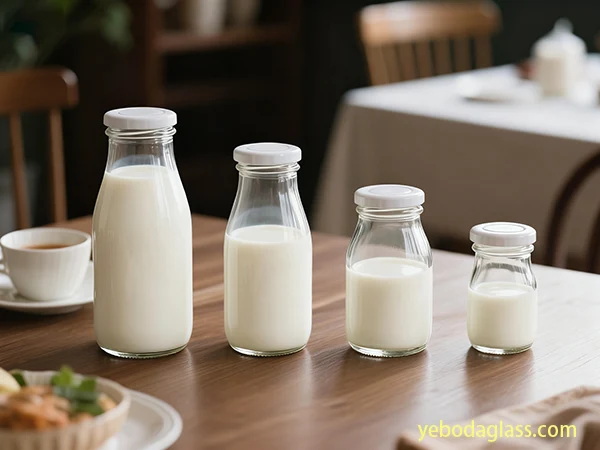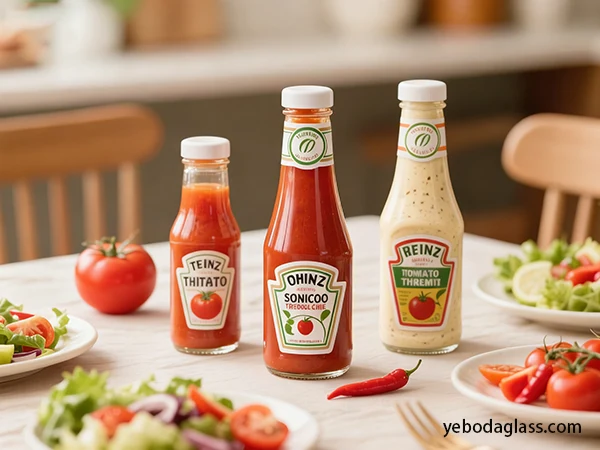Introduction
Have you ever wondered how many ounces in a bottle of beer? Behind this seemingly simple question, there is a history of global brewing, local cultural customs, different regulatory standards, and market strategies of merchants. From North America to Europe, and then to Asia, the sizes of beer bottles vary greatly, and each bottle has its own story. Today, let’s talk about “how many ounces in a bottle of beer” and uncover the secrets of beer bottle capacity.
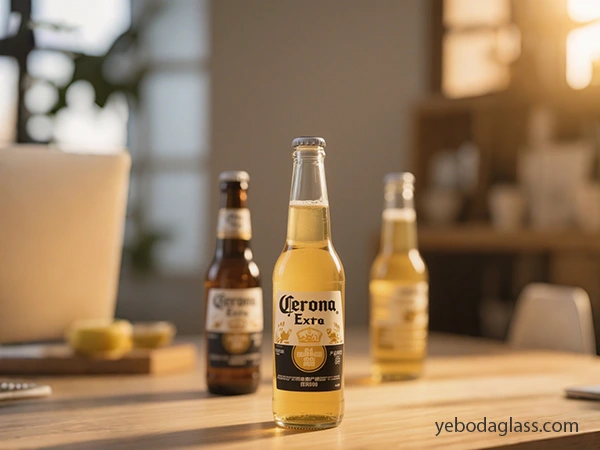
Beer bottle capacity: a "global puzzle" with no unified answer
“How many ounces are in a bottle of beer?” There is really no standard answer to this question. Different measurement methods, bottle designs and regional preferences around the world make the capacity of beer bottles very complicated. Since the emergence of glass beer bottles in the early 18th century, its shape and size have been constantly changing with brewing technology. This diversity is actually caused by cultural differences, market competition and regulatory changes.
Common beer bottle sizes around the world
The capacity of beer bottles in different places is slowly formed to adapt to the drinking habits and market demand of local people. Let’s take a closer look.
North America: Ounces are the "home"
In North America, especially the United States, the 12-ounce (about 355 ml) beer bottle has long been the standard single-serving capacity, used from 1945 to the present. This bottle is often called a “long-necked bottle” or “industrial standard bottle”. It became mainstream after the repeal of Prohibition and was designated as the standard serving size by the US Department of Agriculture in 1980.
In addition to this, there are other options in the North American market:
- The 7-ounce (about 207-210 ml) “Pony Bottle” or “Small Mouth Bottle” is generally used to hold high-alcohol beer or for small-portion tasting.
The standard single bottle in Canada is 341 ml, which is 12 imperial fluid ounces. - The 11-ounce (about 330 ml) “Shorty Bottle” was popular in the United States until the 1970s and in Canada until the 1980s. Some of them appeared to compete with beer cans.
- Mexico is popular with 940 ml (32 oz) “caguama” or “ballena” bottles, which are great for sharing.
Europe: Metric, but diverse
Most European countries use the metric system, and beer bottles are measured in milliliters:
- 330 ml is the standard size in many European countries, called the EU standard bottle.
- 500 ml bottles are also common, especially in Germany and the UK, sometimes called “imperial pints”, and these two sizes are the most common in Germany’s returnable deposit bottles.
- In addition to 330 ml, Belgium also often uses 750 ml champagne-style bottles, which are sealed with corks and wire cages.
- The UK is mainly 500 ml or 330 ml, and the previous “nominal pint” has basically been replaced by the metric system.
- The Netherlands also has a common size of 300 ml.
Asia-Pacific: Diverse Choices in Emerging Markets
The beer bottle market within the Asia-Pacific region is growing rapidly, with China being the most important patron:
- In Japan, 350 ml and 500 ml cans and bottles are the maximum common, with 250 ml or even one hundred thirty five ml cans available in supermarkets.
- Australia has the precise “Darwin Shorty Bottle”, which can preserve 2 liters or maybe 2.25 liters (greater excessive), at the same time as more preferred bottles are 375 ml shorty bottles and 500 ml bottles.
- Tsingtao Beer in China is generally located in 355 ml bottles.
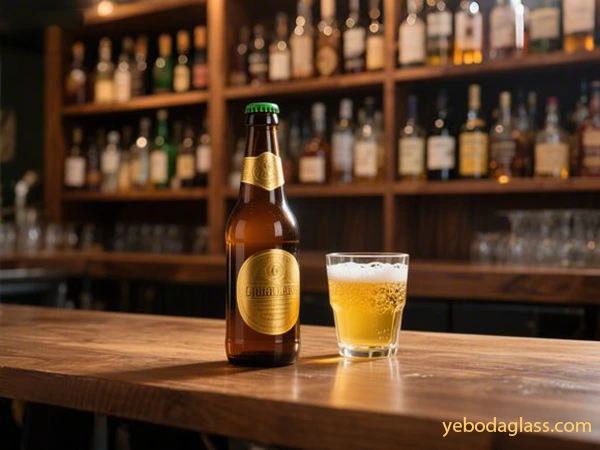
Larger Capacity and Special Bottles: Born for Sharing and Tasting
In addition to the commonplace unmarried-serving bottles, there are numerous large-capability or unique-reason bottles inside the beer world, suitable for sharing, tasting or amassing.
Bomber Bottles
The capability is commonly 22 fluid ounces (about 650 ml), but there are also 25.4 fluid oz. (750 ml). The bottle is rounded and larger than a popular bottle. It is frequently used by craft breweries to show their merchandise and is appropriate for sharing. The 22-ounce bottle is set eleven inches high and a couple of.9 inches in diameter. It is appropriate for fairly carbonated beers and is blanketed with a crown or pry cap.
It is often used to maintain constrained edition or unique craft beers, consisting of Imperial Stout and Barrel-Aged Wild Ale. The 750 ml bottle is from time to time sealed with a champagne cork and cord cage, and is decorated with a wax seal. In the beyond, humans concept that this became exclusive to pinnacle craft beers, however in recent years, craft beer fanatics have begun to choose 16-ounce cans in four-packs, which might be value-powerful and convenient.
Magnum Bottles
Usually 50.7 fluid oz. (about 1.5 liters), the capacity is substantially large, regularly used for celebrations or constrained version beers, and is taken into consideration a “statement bottle” and appropriate for sharing at events. It is frequently used while breweries release antique or special brews due to the fact the huge capability facilitates the beer age and preserve the taste. Big brands like Heineken now and again launch them for unique occasions, greater as a show object, and those suppose it is associated with high-give up products and special activities.
Growlers
The most common is 64 fluid ounces (about 1.89 liters), and half Growlers (howlers/bullets) are usually 32 fluid ounces (about 946 ml). This is a reusable container, usually made of glass or stainless steel, used to transport draft beer from breweries or bars. It can maintain carbonation and freshness and is a portable refillable container. The 64-ounce one usually has a metal handle, while the 32-ounce one may not, and both are sealed with a screw cap or a hinged lid with a gasket.
It is mainly convenient for people to take draft beer home from breweries and craft brewpubs, but it is not suitable for long-term storage, otherwise the beer will oxidize and deteriorate quickly. For craft beer lovers, this is a good investment to drink fresh draft beer at home.
Crowlers
Usually 32 fluid ounces (about 946 ml), they are refillable and machine-sealed aluminum cans, equivalent to “crowlers in cans”, combining the portability, light and oxygen barrier properties of cans with the large capacity of crowlers, and they are disposable and recyclable. They can be filled on demand at breweries and tasting rooms, allowing people to take fresh draft beer directly from the tap. People think it is more convenient and easier to recycle than crowlers. There is no need to wash and store, and aluminum cans can also block light and oxygen to keep fresh.
What factors affect the size of beer bottles?
The size changes of beer bottles are related to history, regulations, market trends and beer styles.
The mark of history: war, technology and competition
Beer bottles have existed as early as the early 18th century. At first, they were thick, heavy, dark in color, and sealed with corks. After lager beer became popular in the mid-19th century, the bottle design had a long neck and steep shoulders. During World War II, the U.S. “Restriction Order L-103” limited the capacity of beer bottles and promoted standardization to improve production efficiency. In the mid-20th century, in order to compete with beer cans, the glass industry made short-necked bottles such as “stubby bottles” and “short and fat bottles”.
Constraints and flexible adjustments of regulations
There is no unified mandatory standard for beer bottle sizes in the world, but some economic regions will coordinate:
- The EU directive has comfortable the scale regulations on meals and beverage packaging, abolished obligatory countrywide sizes, and facilitated market get entry to. Recently, it has additionally paid extra attention to reducing packaging waste and selling the use of recyclable and recycled materials.
- The relevant departments of the U.S. Treasury Department have legal more popular filling volumes for containers, which include 12 oz. (355 ml), giving the market more flexibility.
- Consumption taxes additionally have an effect. For instance, the low rate of 750 ml bottles of beer in South Africa may additionally make humans pick to shop for large bottles. The United States imposes a federal alcohol consumption tax of five cents per 12 ounces of beer.
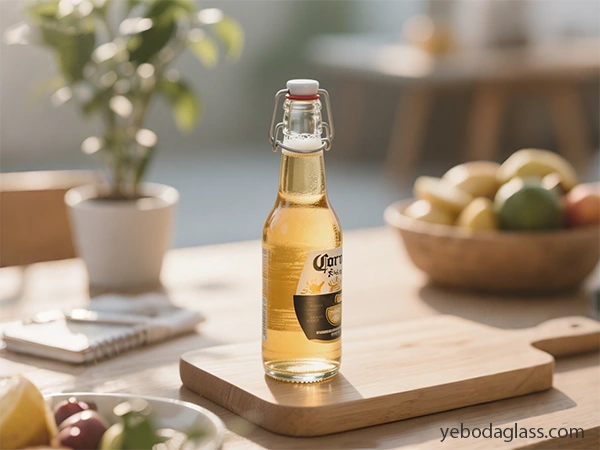
Market trends: consumer possibilities and sustainable development
Consumer possibilities are critical. Household purchasers select small applications along with 330 ml and 500 ml, that are in keeping with the trend of domestic consumption and on line income. After the upward thrust of craft beer, breweries like to apply small and specific bottles to highlight their products.
Sustainable development is likewise an important element. More than 40% of customers select environmentally friendly packaging, which has led manufacturers to start making lightweight bottles, the usage of more recycled glass, and growing recyclable and refillable packaging. Recycling glass can reduce strength consumption and greenhouse gasoline emissions. In addition to glass, biodegradable plastics and aluminum bottles have become more and more famous. Carlsberg is developing a bio-based and fully recyclable fiber bottle prototype.
Branding and globalization
The size and form of the bottle are important in branding, garage and client experience. The craft beer discipline particularly likes small and stylish bottles. After the 1990s, the growth of multinational brewing organizations made beer styles more standardized, affecting packaging. Large breweries managed maximum of the market and their products were greater unified, but this also gave small craft breweries the opportunity to task massive producers with diverse flavors.
Practical Uses of Beer Bottle Capacity
Knowing the capacity of beer bottles is useful for calculating alcohol content material, figuring out serving length, and logistics.
Calculating Alcohol Content and Healthy Drinking
To calculate the alcohol content of beer, multiply the total extent (ml) by using the alcohol through quantity (ABV) percentage, and divide by means of one thousand. One alcohol unit is set 10 ml or 8 grams of pure alcohol, which is the quantity that an average person can metabolize in a single hour.
A fashionable drink within the United States incorporates about 14 grams or zero.6 fluid oz of pure alcohol, that’s equal to 12 oz (355 ml) of 5% alcohol beer, or 5 oz. (148 ml) of 12% wine. The bottle capacity and alcohol content material together decide the full alcohol content. The alcohol content material of beer varies substantially, from approximately five% for regular beer to six%-10% or even greater than 15% for craft beer. Breweries generally imply this on the label. However, many humans are not clear approximately the “popular” ingesting amount and can underestimate how a good deal they drink. Knowing this is vital for responsible drinking.
Considerations for logistics and transportation
Beer packaging consists of cans, glass bottles, PET bottles, barrels, etc. Recyclable bottles are often transported in stackable plastic boxes, and non-recyclable bottles are transported in cartons. The packaging size is commonly standardized to facilitate the pallet size and enhance transportation efficiency.
Transporting alcohol must comply with complex regulations. Different places have different requirements. Carriers must have specific licenses and experience. Importers must also consider dangerous liquid regulations. Temperature control is important during transportation and storage, otherwise it will affect the quality of beer. Efficient logistics is critical for breweries and distributors, such as using software to track batches and optimize palletization. Truckload transportation can reduce costs and improve efficiency. The rise of e-commerce has also brought new distribution channels.
Retail pricing and display strategies
Beer retail pricing will look at demand, supply and competition. The target pouring cost of bottled or canned beer is about 20%-25%. If you want to achieve a 75% profit margin, draft beer has a low cost per ounce and a higher profit margin.
In terms of pricing, offering beer at different prices can satisfy different customers. High prices may make people feel that the quality is good, and bars usually increase the price by 200%-300%. When displaying, liquor stores will carefully arrange the layout, and beer is often placed on lower or middle shelves, classified by type and brand, and placed at eye level with high sales. Although bottled beer has a low profit margin due to packaging costs, it gives consumers more choices, and bulk draft beer is more cost-effective for merchants.
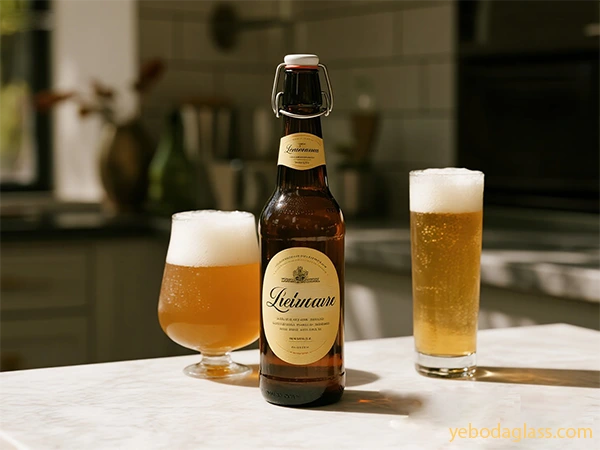
Conclusion
Behind the ability of beer bottles is a complex interaction of globalization, ancient modifications, regulatory constraints, market competition and patron possibilities. From the ounce preferred in North America to the metric length in Europe, to the energy of emerging markets in Asia, each potential and bottle type has its own cultural and commercial significance.
In this diverse and changing beer packaging market, it is important to find an experienced and strong partner. YEBODA understands the complexity of the global beer bottle market. It is not only a supplier, but also a partner in packaging strategy.
Choosing YEBODA’s beer bottles can bring you these benefits:
- Understand global standards, know the mainstream capacity and bottle shape in various places, and let the product enter the target market smoothly.
- The product line is diverse, from the classic 12-ounce long-necked bottle to the 22-ounce craft bomber bottle, with comprehensive solutions.
- Good quality and innovation, providing high-quality glass bottles, focusing on sustainable development, and lightweight, high-recyclability environmentally friendly bottle shapes.
- Professional and experienced logistics and compliance support, can deliver products to the world efficiently and compliantly.
- Help brand differentiation, support customized design, and let the brand stand out with unique packaging.
In the increasingly competitive beer industry, the right beer bottle is not just a container, but also a carrier of brand story and an extension of market strategy. YEBODA has deep accumulation and foresight, and can help you achieve market goals, enhance brand value, and create a successful future together!

